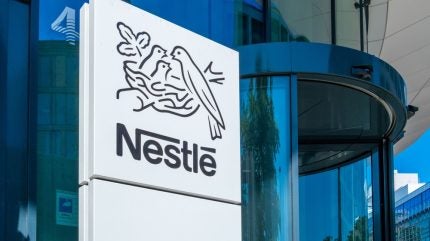
Nestlé has detailed an expanded packaging strategy built around five interconnected pillars, reinforcing its aim for all packaging to be recyclable or reusable by the end of 2025.
The company’s latest disclosure underscores its long-term objective of preventing packaging waste in landfills and oceans while acknowledging persistent infrastructure and regulatory challenges across markets.

Discover B2B Marketing That Performs
Combine business intelligence and editorial excellence to reach engaged professionals across 36 leading media platforms.
Science-based packaging design and material innovation
Nestlé’s approach is anchored in research from the Nestlé Institute of Packaging Sciences in Switzerland, which has operated since 2019 and employs around 50 packaging specialists.
The institute develops recyclable, compostable and bio-based materials, high-barrier papers and refillable or reusable systems designed to reduce the environmental impact of packaging.
Current programmes include testing simplified multilayer films for improved recyclability and advancing high-performance paper structures to replace traditional plastics.
According to company data, Nestlé’s plastic packaging amounted to about 873 kilotonnes in 2024, with 87% of total packaging now reported as recyclable or reusable.

US Tariffs are shifting - will you react or anticipate?
Don’t let policy changes catch you off guard. Stay proactive with real-time data and expert analysis.
By GlobalDataThe firm aims to cut virgin plastic use by one-third compared with 2018 levels and to have more than 95% of its plastic packaging designed for recycling by the end of 2025.
Five pillars: reduce, reuse, redesign, recycle and rethink
The first two pillars focus on using less packaging and promoting reuse.
Efforts include reducing virgin plastic and introducing refill and reuse pilots in multiple markets, such as stainless-steel Nesquik containers in Germany and refill stations for pet food in selected retail outlets.
The third pillar centres on redesigning packaging through industrial partnerships to create recyclable materials and eliminate non-recyclable plastics.
The fourth pillar targets systemic recycling improvements.
Nestlé collaborates with recycling initiatives and industry platforms to strengthen collection and sorting capacity, including its membership in the UK Flexible Plastic Fund and partnerships in Asia and Latin America to improve post-consumer recovery systems.
The fifth pillar, “rethinking behaviours,” recognises the role of consumers, suppliers and retailers in reducing waste through shared responsibility and consistent recycling practices.
Policy engagement and global infrastructure challenges
Nestlé continues to advocate for harmonised regulation of post-consumer resources and supports a legally binding United Nations Treaty on Plastic Pollution aimed at aligning national frameworks.
As a participant in the Ellen MacArthur Foundation’s New Plastics Economy initiative, the company is engaged in efforts to develop effective collection, sorting and recycling systems globally.
It has stated that infrastructure gaps remain a major constraint to achieving full circularity but emphasises the need for coordinated policy and investment to accelerate progress.





